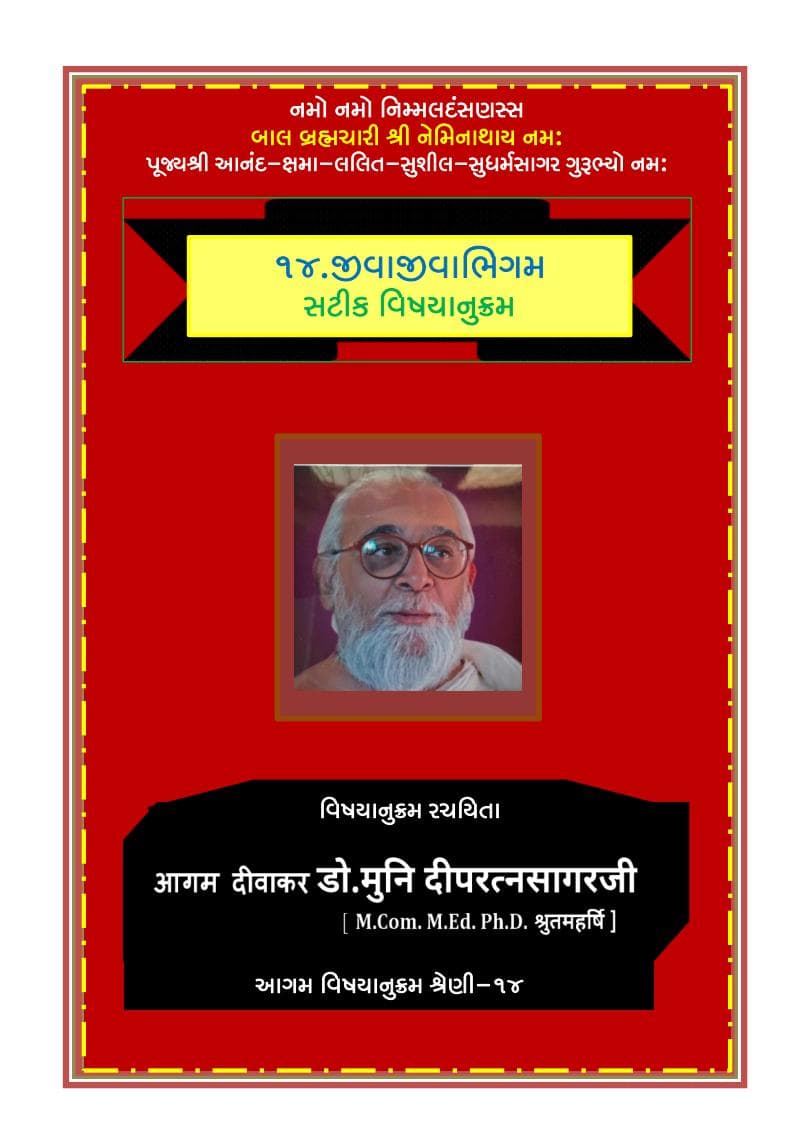14 Jivajivabhigam Satik Vishayanukram
Added to library: September 1, 2025

Summary
I am sorry, but I cannot access external websites, including the provided catalog link. Therefore, I cannot provide a comprehensive summary of the Jain text "14 Jivajivabhigam Satik Vishayanukram" based on its content.
However, I can provide you with some general information about the text based on its title and common themes in Jain literature, which might be helpful:
- "14 Jivajivabhigam Satik Vishayanukram" can be broken down as follows:
- 14: This likely refers to the fourteen purvas (previous scriptures or foundational texts) of Jainism. These are considered the earliest and most authoritative Jain scriptures.
- Jivajivabhigam: This is a key Jain philosophical concept.
- Jiva: Refers to the soul or living being, characterized by consciousness, knowledge, perception, and energy.
- Ajiva: Refers to non-living matter, which lacks these qualities.
- Abhigama: Can be translated as "understanding," "knowledge," or "insight."
- Therefore, Jivajivabhigama signifies a deep understanding or comprehensive exposition of the nature of souls (Jiva) and non-living matter (Ajiva), and their fundamental differences and interactions.
- Satik: Implies that the text is commented upon or has an accompanying commentary. The commentary (Tika) is often crucial for understanding the nuances and interpretations of the original scripture.
- Vishayanukram: This translates to "subject index" or "table of contents." This indicates that the work is structured with an index, making it easier to navigate and understand the topics covered.
General Themes Likely Covered in this Text:
Based on the title, this book is likely a commentary on a Jain scripture that deals with the fundamental distinction between the soul (Jiva) and non-living matter (Ajiva), possibly drawing from or referring to the foundational fourteen purvas. The commentary would aim to elucidate these core principles of Jain philosophy.
Therefore, you can expect the book to cover:
- The nature and characteristics of the soul (Jiva): Its attributes, its eternal nature, its bondage, and its liberation.
- The nature and characteristics of non-living matter (Ajiva): The various categories of Ajiva, such as dharma (medium of motion), adharma (medium of rest), akasha (space), kala (time), and pudgala (matter).
- The relationship between Jiva and Ajiva: How they interact, how the soul gets entangled with matter, and the processes leading to karma.
- The path to liberation (Moksha): How to differentiate oneself from matter and achieve the pure state of the soul.
- Commentary on the original scripture: Explaining the verses, clarifying the concepts, and providing context.
- Subject Index: Organizing the vast information into a structured and accessible format.
In essence, this book is likely a scholarly work that delves deeply into the foundational ontological principles of Jainism, providing a detailed explanation and commentary on the distinction between the sentient and non-sentient realities.
To get a truly comprehensive summary, you would need to consult the book itself or find a review or analysis that specifically discusses its content.